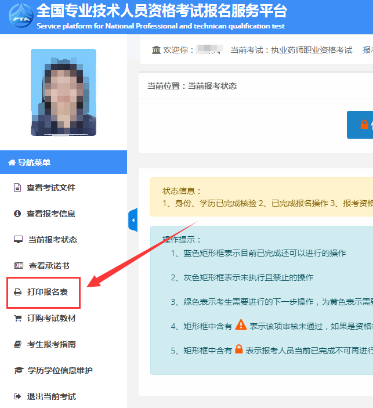一般现在时的结构和用法 一般现在时是什么意思?
- 教育
- 2023-10-17
- 37
一般现在时 (1) 一般现在时的句型结构 ①肯定句:主语+ am/is/are+表语 主语+实义动词(+其它)②否定句:主语+ am/is/are+not+表语 主语+don’t(doesn’t)+实义动词原形(+其它)③疑问句:Am/Is/Are+主语+...
文章目录:
一、一般现在时是什么意思?
以下内容选自奥风英语《中考语法完全突破记忆大纲》动词的时态和语态一讲:
一般现在时
(1) 一般现在时的句型结构
①肯定句:主语+ am/is/are+表语
主语+实义动词(+其它)
②否定句:主语+ am/is/are+not+表语
主语+don’t(doesn’t)+实义动词原形(+其它)
③疑问句:Am/Is/Are+主语+表语
Do(Does)+主语+实义蚂悄巧动词原形(+其它)
(2) 一般现在时的用法
①表示不随时间的变化而变化的事实,真理,格言,警句等.
如:
Theteacher said the earth goes around the sun.
Practice makes perfect.熟能生巧.
Tomorrow is Monday.
②表示目前,现在经常发生的动作,习惯,或存在的闷键状态.常与下列表示次数的频率副词连用:often,usually,always,sometimes,seldom,everyday(week,year,night),once a week等.
如:
Classbegins at eight every morning.
He looks tired.
③运亮表示“预定”或是“安排好”要发生的,不会轻易改变的未来动作,事情.常用于此类用法的动词有come,go,move,stop,leave,arrive,be ,finish,continue,start等.
如:
Theplane arrives at 8 o’clock.
The meeting begins at seven.
④ 在表时间和条件的状语从句中,用一般现在时代替将来时.
常见引导时间状语从句的词汇:when,while,whenever,before,after,till ,until,assoon as
常见引导条件状语从句的词汇:if,unless,as long as ,so long as,in case (that).
如:
Wewill have an exam when we finish the textbook.
We’ll stay at home if it rains tomorrow.
二、一般现在时的时态有哪些?
一般现在时
定义
一般现在时。表示通常性、规律性、习惯性的状态或者动作(有时间规律发生的事件)的一种时间状态
一般现在时有三种形式
1. 谓语是be(am/is/are)的一般现在时。
①肯定形式:主语+be+表语(形容词、名词充当表语)。
I am hungry.
You are beautiful.
He is a doctor.
②否定形式:主语+be+not+表语(形容词、名词充当表语)。
I am not hungry.
You aren't beautiful.
He isn't a doctor.
③一般疑问句形式:Be+主语+表语(形容词、名词充当表语)?
肯定回答:Yes,主语+be. 否定回答:No, 主语+ be+not.
—Are you hungry?
—Yes,I am./No,I'm not.
—Is he a doctor?
—Yes, he is./No, he isn,t.
④特殊疑问句形式:特殊疑问词+Be开头的一般疑问句?
—What is he?
—He is a doctor.
注意:be要随着主语变。
2. 谓语动词是实义动词(及物动词或不及物动词)的一般现在时。
①肯定形式:“主语+及物动词+宾语”或“主语+不及物动词”。
She has a little brother.
她有一个弟弟。
The sun rises in the east.
太阳从东方升起。
②否定形式:“主语+don't/doesn't+及物动词+宾语”或“主语+don't/doesn't+不及物动词”。
She doesn't have a little brother.
她没有弟弟。
I don't eat every morning.
我每天早晨都不吃饭。
③一般疑问句形式:“Do/Does+主语+及物动词原形+宾语”或“Do/Does+主语+不及物动词原形”。
肯定回答:Yes,主语+do/does. 否定回答是:No, 主语+ don't/doesn't.
—Do you eat every morning?
—Yes, I do./No, I don't.
—Does she have a little brother?
—Yes, she does./No, she doesn't.
④特殊疑问句:特殊疑问词+do/does开头的一般疑问句?
What do you like?
When do you go to school?
注意:根据主语确定用do还是does。
3. 谓语是情态动词can/may...+动词原形的一般现在时。
①肯定形式:主语+情态动词can/may.....+动词原形+宾语。
I can finish my homework.
②否定形式:主语+情态动词can/may.....+not+动词原形+宾语。
I can't finish my homework.
③一般疑问句形式:情态动词Can/May.....+主语+动词原形+主语+宾语。
肯定回答是:Yes,主语+情态动词. 否定回答是:No, 主语+ 情态动词+not.
—Can you finish your homework?
—Yes,I can./No, I can't.
④特殊疑问句形式:特殊疑问词+情态动词can/may.....开头的一般疑问句?
—What can you do?
—I can do my homework.
注意:情态动词can/may.....+动词原形。
以上是问答百科为你整理的2条关于一般现在时的问题,希望对你有帮助!更多相关一般现在时的内容请站内查找。




